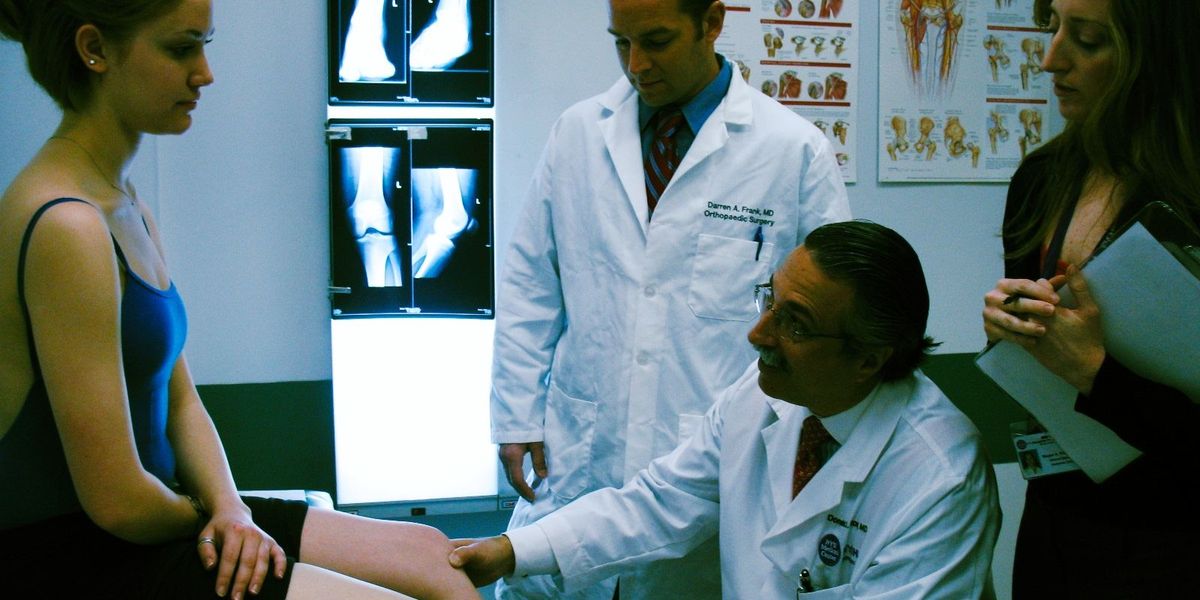The Mecca for Dance Medicine: The Harkness Center Celebrates 30 Years of Treating Dancers
When orthopedic surgeon Dr. Donald Rose founded the Harkness Center for Dance Injuries at NYU Langone Orthopedic Hospital 30 years ago, the average salary for a dancer was about $8,000, he says.
“It was very hard for a dancer to get quality medical care,” he remembers. What’s more, he adds, “at the time, dance medicine was based on primarily anecdotal information rather than being based on studies.” Seeing the incredible gaps, Rose set out to create a medical facility that was designed specifically to treat dancers and would provide care on a sliding scale.
Thirty years later, the Harkness Center has more than 15,000 physical therapy visits each year, a number that Rose points out rivals the number of visits at NYU Sports Medicine. Each year, the Harkness Center’s Dance Clinic sees about 1,200 dancers, regardless of their ability to pay.
And Rose says that they are not done growing.
A World Without Dance Medicine
In 1990, dance medicine was not the widely accepted specialty that it is today. Even if a dancer could afford treatment, they were often being seen by medical professionals who knew little to nothing about dance.
Rose says that it was not uncommon for a dancer to go to see a doctor and be told, “You should just stop dancing.” The result was that dancers would avoid medical intervention. “This often led to dancers reaching a point where they could not dance because they had not received any, or appropriate, treatment,” he says.
Early support and partnership from NYU Langone Health made Rose’s dream for dancer-centered care a reality. The new Harkness Center was designed to treat dancers and to have an education and research focus to advance the nascent field of dance medicine.
Focus on Prevention
While treating injured dancers is always at the heart of the work, Rose says that over the last several years Harkness has dramatically increased preventative care and valuable ancillary services like acupuncture and athletic training.
Education is a key component of their injury prevention initiative. They teach dancers, parents of dancers, and teachers about the role of things like nutrition and mental health. Rose says that they currently do about 50 injury prevention workshops per year with dancers in settings ranging from high schools to Broadway shows and professional companies.
The Harkness physical therapists also conduct approximately 400 preventative physical therapy screenings annually to help dancers identify potential injuries before they happen.
Dreams for the Future of Dance Wellness
While the number of practitioners working in dance medicine has dramatically increased to better meet the unique needs of dancers, Rose is still concerned that dancers aren’t getting treatment early enough or frequently enough. “Dancers should be running towards the health practitioners that understand them so that injury doesn’t end their career prematurely,” he says. He remains frustrated with the barriers to care that many dancers face. “Hopefully in the future the healthcare environment will provide better access because the cost of care should never be a barrier.”
Even with the increase in dance medicine practitioners, ensuring proper care of the dancer means more doctors need to be educated on their needs. “We have to find areas where we can increase the education of practitioners who might come in contact with the dancers,” he says. “They may be an excellent practitioner, but they may have never seen many of the injuries that are very specific to dancers.” He cites examples like iliopsoas syndrome, which is often mistaken for a labral tear, but does not require surgery. Or the os trigonum, an extra bone at the back of the ankle that dancers may need to have removed.
As Harkness enters its fourth decade, Rose wants those who have an interest in dance medicine to use Harkness as a resource. And you don’t have to be a dancer to be a great dance medicine provider he says—Rose was national champion in rowing crew.
There are many career paths in dance medicine: physician, physical therapist, dietitian, athletic trainer, and so many more. “We need more of all of them,” he says. “Ask us,” he says. “We always try to be accessible even if we are busy. How can we help you get to where you want to be?”




